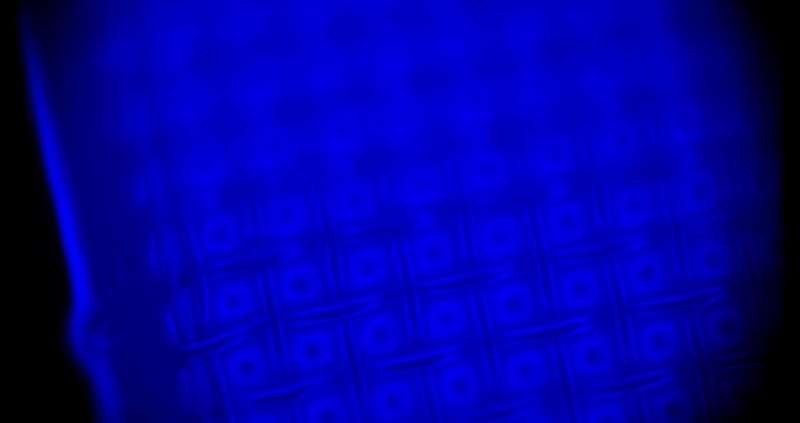Shining light into the dark: New discovery makes microscopic imaging possible in dark conditions

Curtin University researchers have discovered a new way to more accurately analyze microscopic samples by essentially making them glow in the dark through the use of chemically luminescent molecules.
Lead researcher Dr. Yan Vogel from the School of Molecular and Life Sciences said current methods of microscopic imaging rely on fluorescence, which means a light needs to be shining on the sample while it is being analyzed. While this method is effective, it also has some drawbacks.
"Most biological cells and chemicals generally do not like exposure to light because it can destroy things—similar to how certain plastics lose their colors after prolonged sun exposure, or how our skin can get sunburned," Dr. Vogel said. "The light that shines on the samples is often too damaging for the living specimens and can be too invasive, interfering with the biochemical process and potentially limiting the study and scientists' understanding of the living organisms."
Dr. Yan said, "Noting this, we set out to find a different way to analyze samples, to see if the process could successfully be completed without using any external lights shining on the sample."
The research team successfully found a way to use chemical stimuli to essentially make user-selected areas of the samples glow in the dark, allowing them to be analyzed without adding any potentially damaging external light.
Research co-author, Curtin University ARC Future Fellow Dr. Simone Ciampi said that up until now, exciting a dye with chemical stimuli, instead of using high energy light, was not technically viable.
"Before discovering our new method, two-dimensional control of chemical energy conversion into light energy was an unmet challenge, mainly due to technical limitations," Dr. Ciampi said.
"There are few tools available that allow scientists to trigger transient chemical changes at a specific microscopic site. Of the tools that are available, such as photoacids and photolabile protecting groups, direct light input or physical probes are needed to activate them, which are intrusive to the specimen. Our new method however, only uses external light shining on the back of an electrode to generate localized and microscopic oxidative hot-spots on the opposite side of the electrode. Basically, the light shines on an opaque substrate, while the other side of the sample in contact with the specimen does not have any exposure to the external light at all. The brief light exposure activates the chemicals and makes the sample glow in the dark. This ultimately addresses two of the major drawbacks of the fluorescence method—namely the interference of the light potentially over-exciting the samples, and the risk of damaging light-sensitive specimens."
The full research paper, "Spatiotemporal Control of Electrochemiluminescence Guided by a Visible Light Stimulus," is published in Cell Reports Physical Science.
More information: Yan B. Vogel et al. Spatiotemporal Control of Electrochemiluminescence Guided by a Visible Light Stimulus, Cell Reports Physical Science (2020). DOI: 10.1016/j.xcrp.2020.100107
Provided by Curtin University



















